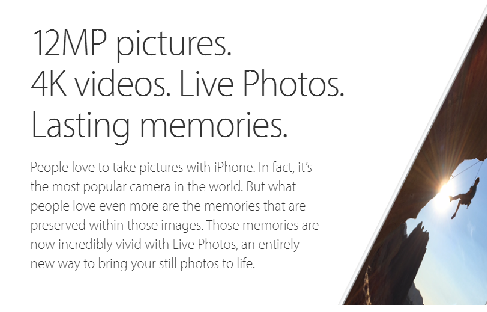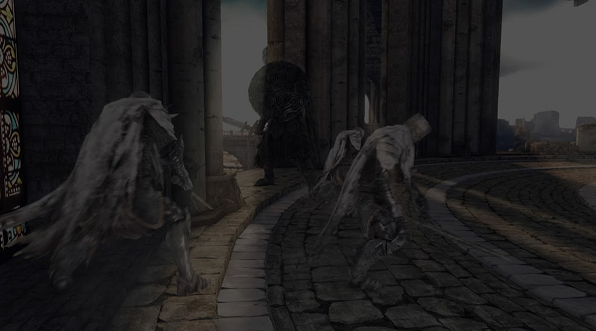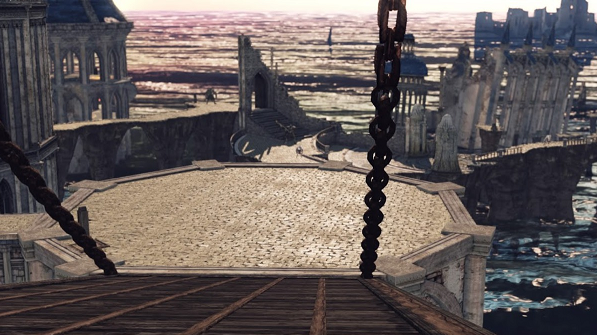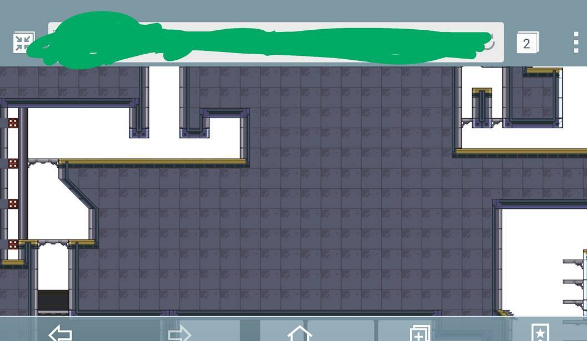This essay is about Digital Space Photography (DSP). In particular, I'm focusing on a subcategory of DSP - Video Game Photography. In turn, DSP is a category of photography where the photo is created within digital spaces, which are computer-driven places that humans can exist and interact in - such as web browsers, video games, computer desktops, etc.
I'll write about how the conditions of image-production with DSP have a lower financial barrier to entry than traditional analog or DSLR photography. Then, I'll talk briefly about the history of the video game screenshot, discuss the terminology 'screenshot' and 'photograph', then focus for the rest of the essay on existing discussions about DSP and current photographers who practice Video Game Photography. I also talk about motivations for the practice of Video Game Photography, partly based in my experience as a video game designer.
Who has the ability to photograph?
In 2016, if you want to photograph a large amount daily - say 50-100+ times, then an analog camera with physical film and printing will require financial backing, either from your savings, or a patron. The cost of these processes will add up. If you're using a camera other than a cheap digital or a phone, you'll need to buy the camera, a lens, cases, memory cards... etc. Photography always requires a financial barrier, ranging from the very tiny with cheap cellphones, to analog and DSLR cameras.
The increasing affordability of faster computers is to thank for the lowering of cameras' financial barriers. Just like how the results of expensive music studios became doable on a laptop setup. Or how video games became able to be produced on low-tier computers. Or how you can create a movie with just a phone or a < $100 digital camera and laptop. Photography exists on phones or low-end digital cameras. In short, if you don't need expensive equipment, you no longer need to go to trade or art school or have disposable income to become a photographer.
These mediums, and likely others, have all underwent the process of shedding their financial burdens, because of the digitization of their equipment and recording formats.
Often, for a piece of art (music, photos, paintings) to become popular, it requires expensive techniques, either in cost of tools, or time investments in the formal learning process. We have those who use physical film or render farms to create movies, or hire large crews for filmmaking. The pop producers with their sound-insulated vocal booths, analog synths, expensive synth plugins and complex workspace set-ups. The large, AAA video game companies with massive marketing budgets and tons of expendable artist and programmer labor.
It's not surprising, then, that photography has gone much of the same route. Most of the photos you see in museums were taken by photographers with expensive equipment and have had years of formal training or practice in traditional photography technique. Even digital communities like Instagram mimic this cultural hierarchy - look at the clean, polished aesthetics of the most popular Instagram photos. Does the public have an aversion to 'budget media'? Does art without a polished aesthetic hit too close to home on the reality of our world? Want a photo in a museum? Better have your lens listed! Camera! Film! Exposure time! ISO! F-stop! Can't do that? Maybe let Richard Prince steal it! To museums' credit, some exhibitions have featured what would be considered 'amateur' photography. But there is still a dynamic of a more powerful group granting 'tolerance' towards the less popular groups of photographs. The masses can use their phones to photograph, so long as those photographs don't encroach on 'skilled' photography.
Digital Photography
Look at any marketing for a smartphone, and you'll see a common trait, the focus on resolution.

Digital cameras on phones are in an endless march towards infinite megapixels, trying to reach some theoretical limit of 'true', 'rational' representation of reality. The difference in visual quality of my phone photos now and my budget digital camera photos from 2006 are noticeable, but barely important to me, other than the annoyance that phone photos today can take up to 10x+ the storage space. (In fact, some phones are incapable of producing lower-quality photos without separate apps.)
It's clear that 'digital photography' is digital insofar as its abstraction of physical processes into software. It still falls under the heading of traditional - or - Physical Space Photography. The digital/analog comparison only applies to how the process of the photo creation from an input source of physical light works.
The digital in Digital Space Photography refers to spaces, as digital spaces as a new kind of space, separate from the physical.
Video Games
We can think of a video game as a digital space where one or more players interact with it in some restricted way. For example, within the space of Fruit Ninja, we can only slash fruit. Within the space of Super Mario Bros., we can only run around and jump and try to get to the last level. Of course, when you explore less traditional video games, you will find some that resemble other mediums - visual art, theatre, music, regular old software, fiction, etc. The flexibility and hard-to-define nature of video games lies within their existence as digital spaces, as places to be filled with rules and objects and interactions.
Ever since the rise of home console gaming in the 1970s with the Magnavox Odyssey, popular culture began to be flooded by images which belong to DSP's subcategory of Video Game Photography.
This 'photography' has two main sources.
The vast majority of early Video Game Photography consisted of marketing images, such as these photographs of games on the Magnavox Odyssey from the early 1970s. Marketing through print and internet ads continues to be one of the primary sources of Game Photography in the 21st century.

The other major source of Video Game Photography is player-based. This source has grown roughly in line with the advancement of image capturing technology, whether it be mobile phones in the 90s and 00s, the ability to take a photograph of your own PC, or in recent years, software built into game consoles or game services that let you capture a photograph of the game with a single button press.
These photographs, player-produced and marketing-produced, are commonly known as "screenshots", which is telling because it indicates that often the people producing screenshots are not viewing the process as photography (which obviously is fine). In any case, I consider all screenshots to be photographs, regardless of image-maker intent, because the process of producing a screenshot is similar to that of taking a photography in a physical space.
It's become easier to capture photographs of video games thanks to advancement in storage and software technology. An example would be the screen capture function on the PlayStation 4 home gaming console. With the ability to take screenshots of a game at any time, this source of Video Game Photography is becoming increasingly blurred between 'intentional photography' and 'screenshots to share with friends'.
A fictional museum of the future might have difficulty in classifying an image produced from a digital space. Should it be considered a photograph or a screenshot? Does it matter? How would we tell?
In a 2015 article on game photography (which gives some good examples of game photographers), one photographer says that his photography within games is merely 'screenshotting', " because the skill set required is distinctly different to traditional photography.".
But, follow this line of thought enough, and we end up at creating a elite group of, surprise, people who can afford to buy DSLR or analog cameras, which require more 'skill sets' - people who are the 'true photographers'. We create a division between 'screenshots' and 'photographs', defining 'screenshots' as a purely inferior work to 'photographs'. The process of photographing within a video game differs, obviously, in some ways from real life, but concepts such as having a theme for one's photographs, framing the picture, chance, etc., still come into play.
Considering, again, that this has happened with other mediums... lo-fi music vs. pop music, expensive films vs. budget-shot films. What's the difference? Money, and/or visual/aural spectacle.
Well, this points to that maybe, we shouldn't even worry about considering some image a photograph or a screenshot. If the impossible task of precisely defining the word 'game' has told me anything, it's that holding preconceived notions of what makes something 'legitimate' can seriously damage the value of looking at an artwork.
These distinctions between legitimate and illegitimate, periphery and center, occur throughout history. They pop up whenever some form of expression becomes more accessible to the masses. That this issue of definition exists is evidence that Video Game Photography is one of the most accessible methods of photography (contingent on possessing a gaming device and at least basic gaming skill), beat out by mobile photography (requiring only a smartphone). We shouldn't worry about what is legitimate, but be more interested in what sorts of curations or collections of series of photographs/screenshots/whatever we can make, and the sorts of things we can learn from them.
Video Game Photography is a subcategory of Digital Space Photography. DSP doesn't have to deal with expensive equipment, or signifiers of 'legitimacy'. I think such a photography is better off this way.
Video Games are a kind of digital space
I want to expand on how I mentioned video games were digital spaces.
Well, video games involve the traversal of some kind of digital space. When you think of a game, you might think of Mario, Minecraft, or some first-person shooter like Halo or Call of Duty, or the towns of Pokemon, which are representations of physical space. Most games present digital space in this manner. Funnily enough, just like phone cameras are trying to perfect the representation of reality with more megapixels, video games are often trying to perfect their 'realistic' graphics! What a world! Ah...
Games' digital spaces can be sometimes abstract - e.g. if you remove the level select, the levels of Candy Crush form an abstract "world" we can traverse as we play through them in order. The same goes for level-based puzzle Flash games. Text-based games conjure physical space in the same way novels do. Etc. It's an interesting framework to use when viewing games.
Desire
So. Why not consider photographing the spaces in a game? Many games are 3D. They stream their digital realities through our screens, often at 30 or 60 frames per second. We can photograph them like in real life. 2D games, we can, too, just from a limited perspective. Games are as much of an artifice as are the buildings we walk by each day.
People spend lots of time in these digital spaces - not just people, but humans. Might we find some meaning in these places? The intention of a creator? The frustration of an artist's labor? Patterns in how games represent physical space?
You can emulate landscape or architecture photography in a game, just like the designers of video games emulate architecture and landscapes using 3D polygons. Often this sort of video game photography is as visual-pleasure-based as its physical counterpart. It misses what can often make photography so interesting - how it can reveal more than the physical - the systems and ideas underlying the spaces or subjects captured.
For example, this website curates photos taken within Grand Theft Auto V. http://illsnapmatix.com/ To some extent, they're exactly the same photos you might take of Los Angeles in real life - in short, while these are game photographs, many of them are the same sort of visual pleasure photographs you'd expect to see on popular Instagram feeds. High-definition, nostalgic and warm filters, and little to no textual information. While they may form something interesting in combination and contextualized by an essay or writings, on their own, all they seem to prove is that yes, video games can do realistic lighting and make objects look realistic.
It is interesting to think that while real-life buildings and digital buildings are both created by humans, it is just as hard to trace the origin of the digital building, despite our increased ability to observe it (free of most physical constraints). A building may have multiple architects, designers, modelers, and these roles may overlap. It is also interesting to think about the obsession popular culture has with realistically recreating our physical world in a way we can explore without rules or physical limitations. Give anyone a controller to Grand Theft Auto, and you might find they'll be recklessly driving against traffic or jumping off bridges in a matter of seconds. These thoughts have a lot to do with the theory of play in games, and have been written about extensively. Suffice to say, Video Game Photography potentially has a lot to comment on with respect to these subjects.
Physical spaces are designed to satisfy human desires - desire for food, sex, safety, etc... and these desires sometimes overlap with digital spaces. But digital spaces too, have their own unique sets of desires or ideas underlying them.
Video games, unconsciously or not, often are appealing to some popular desire of humans. Of course, there are exceptions. But look anywhere and you'll often find the apocalypse porn of any survival, zombie game, wanting to see what the world is like without society (think: Rust,The Culling), to experiment with the formation of social factions, or the unbound creation of Minecraft or Terraria, unbound power like many RPGs, the desire to escape into a world and rule it.
Eron Rauch's photos of World of Warcraft, an online game where multiple people can exist in the same world, http://www.eronrauch.com/#/a-land-to-die-in/ show the presence of death underlying the game, through displaying corpses of other players. This much is a reminder that any 'new' land you may come across is nothing but a digital construction, one available for anyone else to tread. It is a reminder of what people exist in that world for - to explore, to progress, to meet people.
Navigation
In digital spaces, often you can traverse these worlds in non-physical ways, see 'impossible' things, all designed by some human or humans. We don't have the limits of our physical bodies, however, in digital spaces, we have the limitations of how the 'camera' can be manipulated. In other words, our movement through the space - whether it's text or a 3D world - is limited by designer-set rules. We might only be able to jump so high or run so fast. So, each new game has a new 'camera' to work with. Often this camera even tells us a lot about the game itself, or the photos that will be produced. The camera in Dark Souls is 3rd-person, slightly above and behind you, to create a sense of suspense when running from a threat at your back. The 'camera' in video games is a term for how the world is framed, and has much to do with a player's perception of the game's space, much like in film.
Sometimes, limits can be removed through hacking a game. Some photographers look for visual glitches in games, intentionally walking into walls or trying to find places where a game designer forgot to make an object solid. Glitches are a popular way to lead one's navigation through a digital space.
By picking particular ideas to photograph, we discover new ways of traversing digital spaces of video games, such as Tizzy Canucci's work from Second Life (an online game with a very rich community of photography, videomaking, and artistic creation), which focuses on documenting the human creations with Second Life's many worlds.
Games' spaces are partially a result of history of players treading previous games' spaces - I, as a designer, know how people reacted to some old game. An analog to this might be how musicians understand the history of popular reaction to other musicians. This influences how I construct the spaces in my game. The spaces contain assumptions - assumptions about humans, and how they might react to particular situations, or with particular ideas laid in front of them. The great thing is, games are so diverse, that each contains different sorts of assumptions and ideas, which a photographer of video games can use to guide their 'camera'.
Reality
Everything in a game has been constructed by human labor. By a person hunched over a computer. On one end of the spectrum we have particular pieces of 3D art that a single artist created, on the other end we have computer code-generated visuals, which had a programmer behind it. The same goes for other things - the writing in a game, the way the player moves, what you see when you pause the game, etc.
In real life, something can often just be brushed off as an accident - a candy wrapper blown onto your balcony, what seemed like a passing smile from a stranger. In games, accidents do not exist. Perhaps something was created by random algorithms or by the player's actions. But anything you see, can be traced back to some logic. What we know as 'bugs' are merely the unexpected result of a computer's correct interpretation of instructions.
Each space in a game - 2D, 3D, more abstract, such as the written words of a Twine game - while it only appears to be occupied by a single player at a time (or more than one in multiplayer games), it is a space that has been used - across time, and physical space - by many players. When we think about the infinity of players that moved through the first town of Pokemon, we learn something - by looking at this space in the same way we might look at a subway and the circulation of people within. Or an elementary school entrance. A digital space can exist infinitely, on multiple smartphones, or Playtations, or Wiis. In some ways, game design is the process of creating a digital space, and imagining what sorts of trends appear when we imagine infinite different players interacting with the space.
For people who play games, often, capturing screenshots is nothing new, or if it not new, it is a skill that players are suited for. Games are often all about looking and perceiving, filtering the visual world for particular facets - physical skills that photography often benefits from!
We live a lot in the digital, whether it be playing games, or on the Internet, but viewing these places as spaces to be captured by a photograph, contextualized and narrated, is not yet a common idea.
A digital space photography, such as Video Game Photography, strives to develop techniques of capturing these places.
We beg friends for their vacation photos when they visit physical sites. How do we not care about the spaces they visit in the digital realm? A digital space may be vacation or work, like physical. Why is capturing a physical reality any more telling than capturing a player within a digital reality?
Example - Dark Souls 2: Heide's Tower of Flame
I got interested in video game photography around the end of 2015, taking photographs from the screenshot function on my PlayStation 4. One series that has caught my interest (and to some extent, sparked my interest in architecture and digital spaces) is Dark Souls, a game that is about navigating detailed, well-curated architecture and landscapes, while dealing with irritating and difficult 3D combat (it's a notoriously masculine and inaccessible game, difficulty-wise). Outside of the excruciating boss fights, the games feature no music, only the sounds of footsteps, enemies, weapon noises, and natural ambiences - ideal for walking around and observing (when not being assaulted by enemies.)
Players of Dark Souls games often refer to them as the "Souls" games, which have very common traits in how you level up and explore the world. They are all produced by the Tokyo-based game studio, From Software. These games are Demon's Souls (2009), Dark Souls 1/2/3 (2011/2014/2016), and Bloodborne (2015).
This is a photo from an area called Heide's Tower of Flame from Dark Souls 2, one which I think captures well the way that the difficult, inaccessible-to-beginners combat, and its architectural design, stand in relation with one another. This photo was taken right after dying, showing enemies running away from me, because their AIs are set to have them return to their initial positions when there is nothing to kill.

Here is another photo showing part of the area's layout. You can see the imaginary nature of this digital space, and how games can let us experiment with architecture, free of physical constraints. The area hints at a history where the buildings and cliff were not as flooded. Perhaps relevant to today and the melting icecaps.

You can see more photos from this mini-series here: http://seancom.nfshost.com/photo/game.html
Conclusion/Other
Other ideas I'd like to explore include render photography - the notion of more intentionally trying to explore a rendered 3D space. Think architectural renders, but less practical and more exploratory.
We can easily create impossible architecture... merely levitate a plane off of the ground and call it a building.

If we're to investigate the architectural possibilities of living in such spaces, what better way than through render or game photography? Render photography can place us into those situations. A game, on top of letting us interact in those settings through a digital avatar, can additionally let us photograph various ideas we might have from interacting with the space - sleeping in it, eating in it, fighting, etc...
Computer photography, or photographing (using screen capture functions of phones or computers) portions of one's screen. People might use this on social media to prove someone was wrong or did something bad. Capturing a screenshot of your computer, whether for an argument or amusement, is a common action.
This Tumblr uses computer photography on software. http://screengrabaesthetics.tumblr.com/ While this focuses mostly on visual pleasure from moments of using software (such as editing a 3D model, or a glitch), it is nevertheless an example of how the digital workspace is a rich ground for computer photography.
For example, because of how we are making Even the Ocean, it's possible to see parts of its finished levels on-the-go, on my phone, in a place that is definitely not 'work'. The workplace is becoming mobile. So, I photographed viewing an image file in my mobile browser, an image file of a level in the game. It's a space from the game, however, it is not one that anyone is currently interacting with.

Hopefully I'll be able to write more about these subjects in the future. For now, I hope I've presented a case for why video games are a rich, and so far, largely unexplored space for photographers, or perhaps in general, artists. If you play games, maybe you may see your favorite games in new lights! And if you do not play many games, maybe this will encourage you to explore the possibilities of games' digital spaces.
- Sean HTCH (Feb-Apr 1st 2016)
Find more of my writing here!